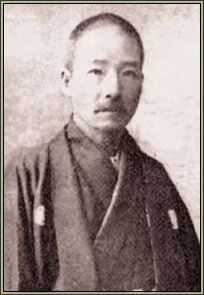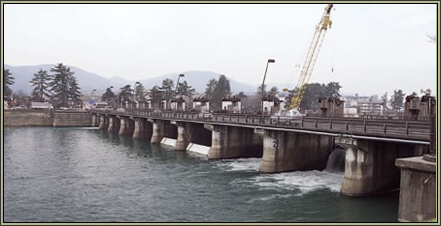

We have already seen how natural geographical features encouraged the prosperity of dynasties.
When people’s activities and socioeconomics are swollen due to such prosperity, the original natural geographical features became no longer suited to the interests of human society.
Japan’s agricultural production increased drastically during the Edo era. This was due to dramatically improved water-use in various regions.
However, this particular area in the Kinki region did not have large-scale irrigation facilities which left their names in agricultural history.
This may be partly due to the fact that the development of plains and basins in this region had already gone to the limit since ancient times.
Few people today know that the Osaka Plain used to be an area with the the largest numbers of small reservoirs in Japan.
Since the plains were originally marshy, small reservoirs and small-scale irrigation which employed pumping up of groundwater was more than enough.
We can rather say that a necessity for this region was not irrigation, but drainage.
Yodo River features in its high content of granite. It received particularly massive outflows of debris from Kizu River. On one hand, this expanded the delta at the river mouth and Osaka City, but on the other hand, it also made the riverbeds shallower and led to frequent flood damage.
As flood control and water transport was promoted, embankments along Yodo River were gradually raised. As for farmland in the area which was cultivated since ancient times and had no major irrigation or drainage canals, tackling the problems of increasing akusui (drainage from rice paddies, literally meaning “bad water” in Japanese) was getting more and more serious.
Meanwhile, the Kotou Plain near Lake Biwa was not inferior to Yodo River in terms of the area of agricultural land. However, the Kotou Plain suffered from floods when it rained while it suffered from droughts when it didn’t rain.
Each time a flood struck Osaka, a clash of interests escalated between the Kawachi Plain and the Kotou Plain over one point along the Seta River. Above all, the serious disasters due to flooding were the Great Flood of Yodo River in 1885 when 100 people lost their lives and 260,000 suffered damage, as well as the ones in years 1889 and 1895, and the catastrophic flood in year 1896, when 360 lives were lost.
In a rush to modernization, the Meiji government invited engineers, including Cornelis Johannes van Doorn and Johannis de Rijke, from overseas to solve these serious problems. As a matter of interest, Doorn gained 500 yen in monthly salary at a time when the average government official received 7 to 8 yen per month. 4 yen was enough to rent a house with dinner inclusive. From these figures, we can estimate what great outcomes were expected from these engineers.
The Dutch method of construction that the engineers brought in was unprecedented because solutions were totally sought throughout the entire catchment. Rijke’s work consisted of water controlling devices designed so as to prevent erosion and sedimentation in the river as well as sabo (erosion and torrent control). He declared to allocate half the budget of the project to sabo works. Thus, sabo, a Japanese term even currently used worldwide, was carried out under the leadership of Rijke and his colleagues.
Preventing earth and sand from being scraped into rivers was the project’s final goal, but this required a long time. It did not bring an immediate halt to the floods that frequently hit the area at the time.

Professor Dr. Okino Tadao
Reprinted from Yodogawa Hyakunenshi (100 Years’ History of Yodo River) by the Kinki Regional Construction Bureau
It was obvious to everyone that a drastic improvement of the entire Yodo River was urgently needed. However, at the time, Japan had other important matters to respond to, such as the Sino-Japanese War and Russo-Japanese War that affected the nation’s future. Thus, the engineers were much anguished.
This historical conundrum that continued over 1,000 years was ultimately solved by Japanese engineers who had studied civil engineering in the West. At the forefront was Professor Dr. Okino Tadao who was an engineer at the time working at the Ministry of Interior.
Okino Tadao and his colleagues dug down deep at one point in Seta River, expanded its width, and constructed an enormous weir with a gate that made it possible to control the flow.
Nango-araizeki (Nango Regulating Weir): this weir made possible the use of Lake Biwa as a reservoir. This outstanding idea was finally completed in 1905 when the Treaty of Portsmouth was signed after the Russo-Japanese War.
For the “Lake of Dynasties,” the dawn of modernization finally came over.

Nango-araizeki (Nango Regulating Weir) today
